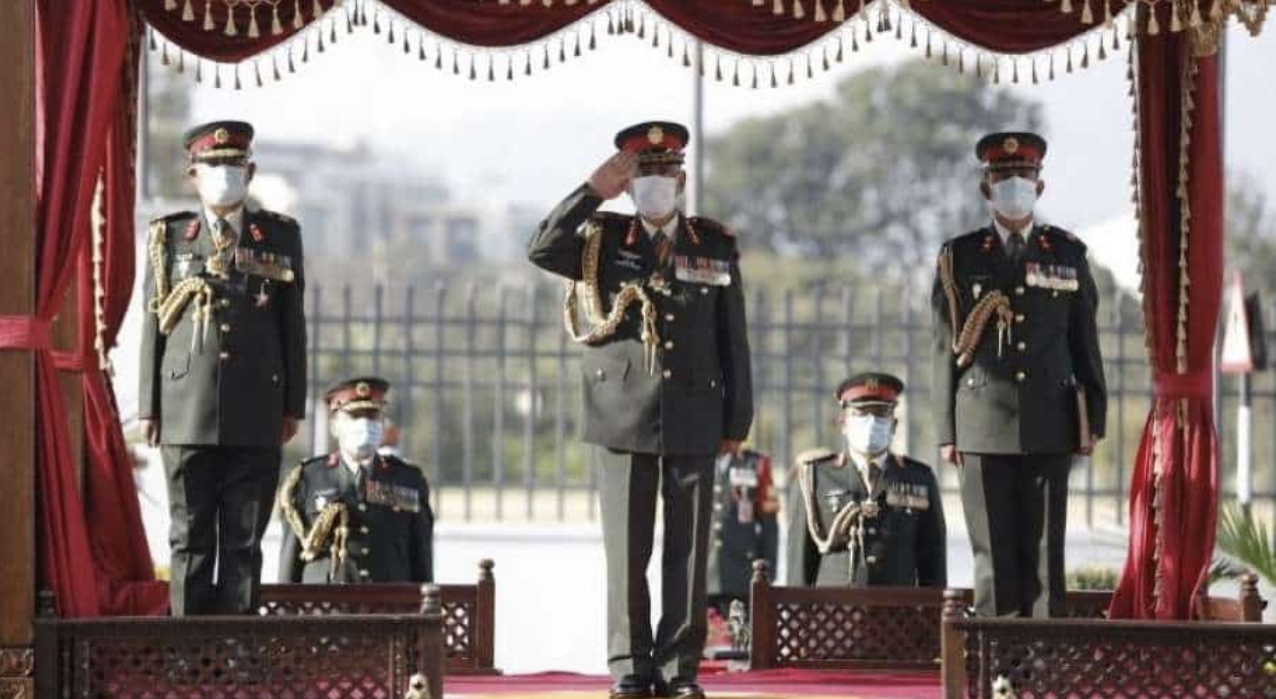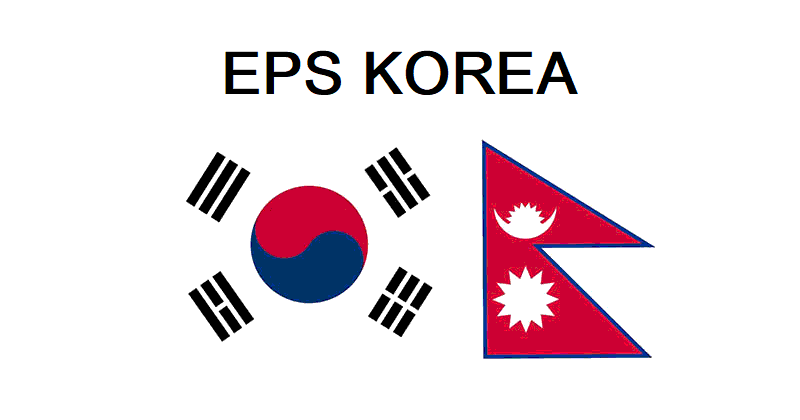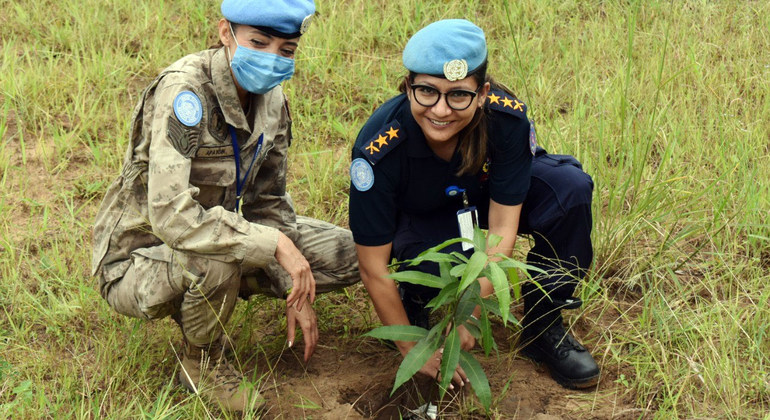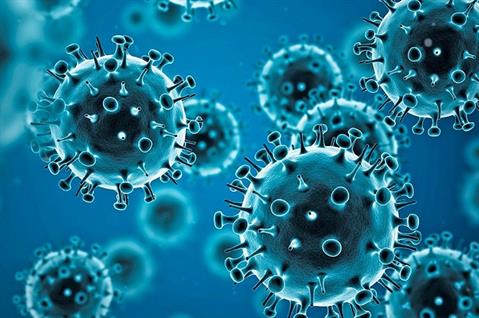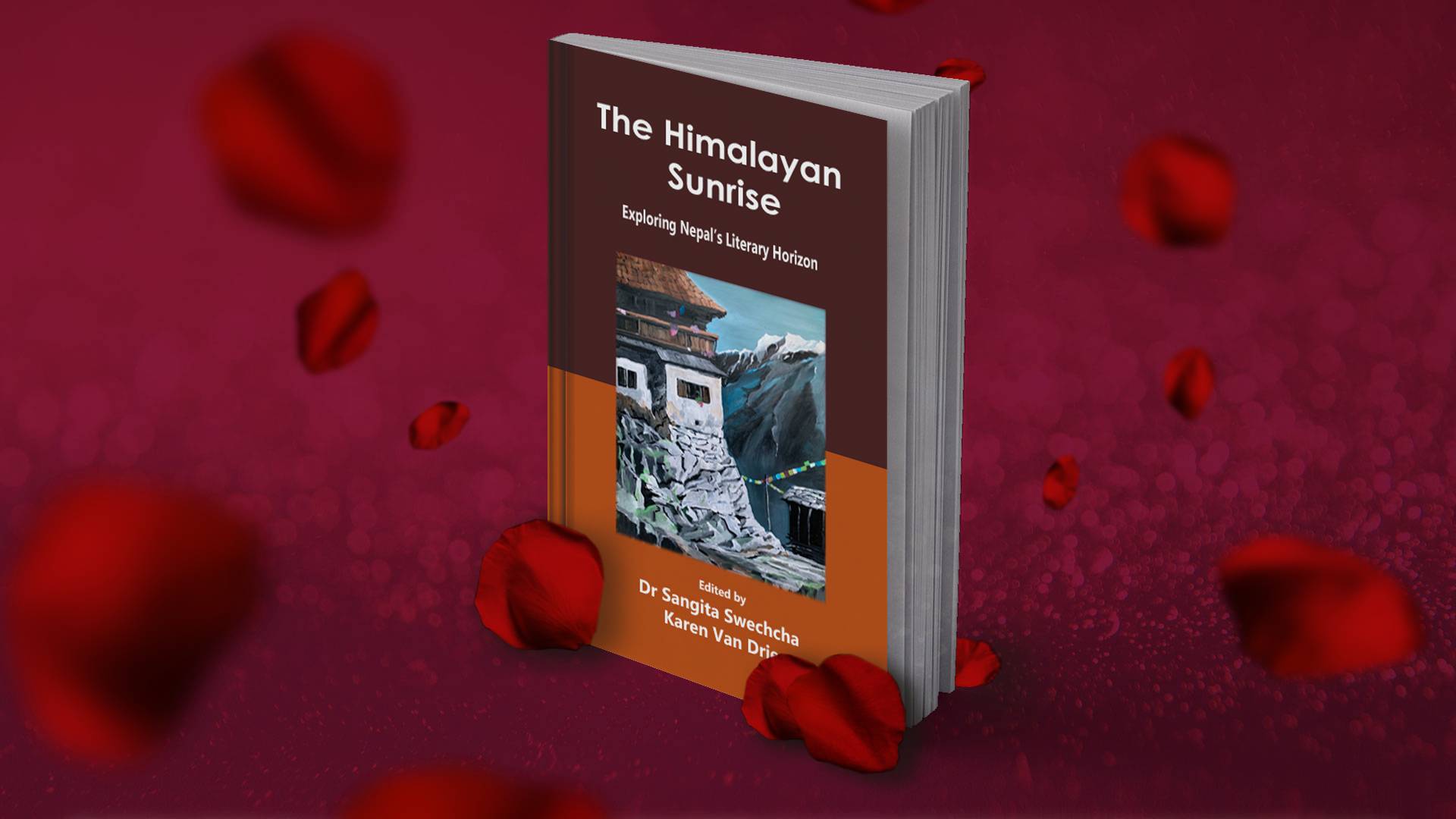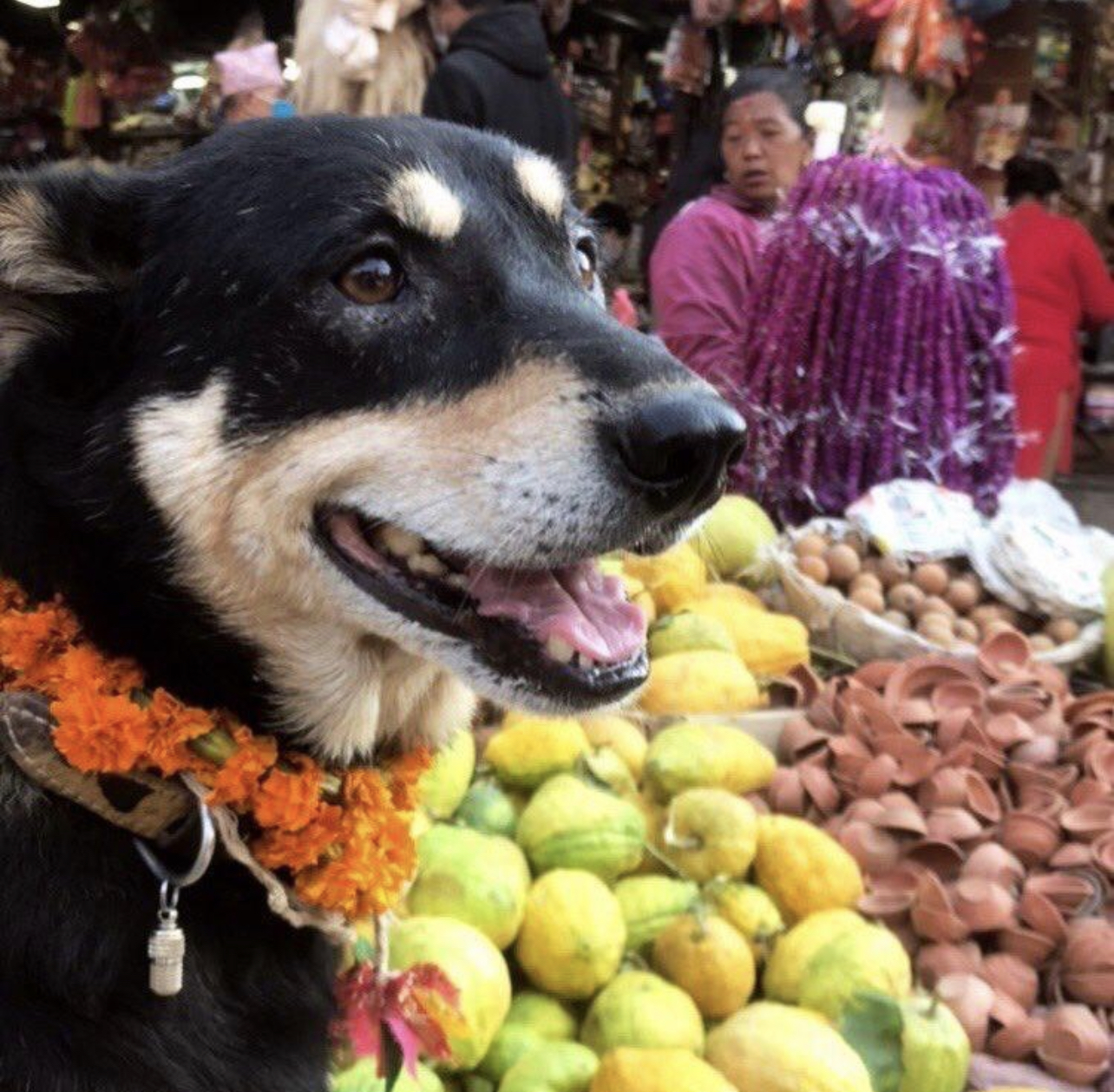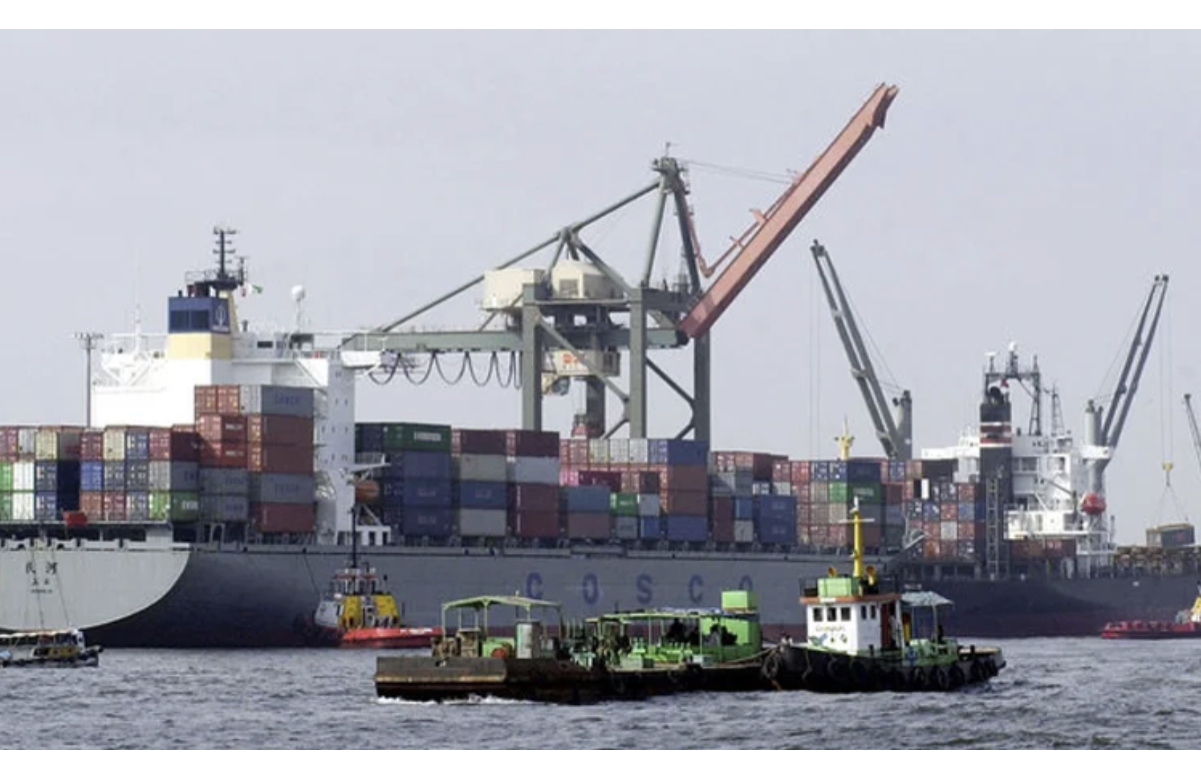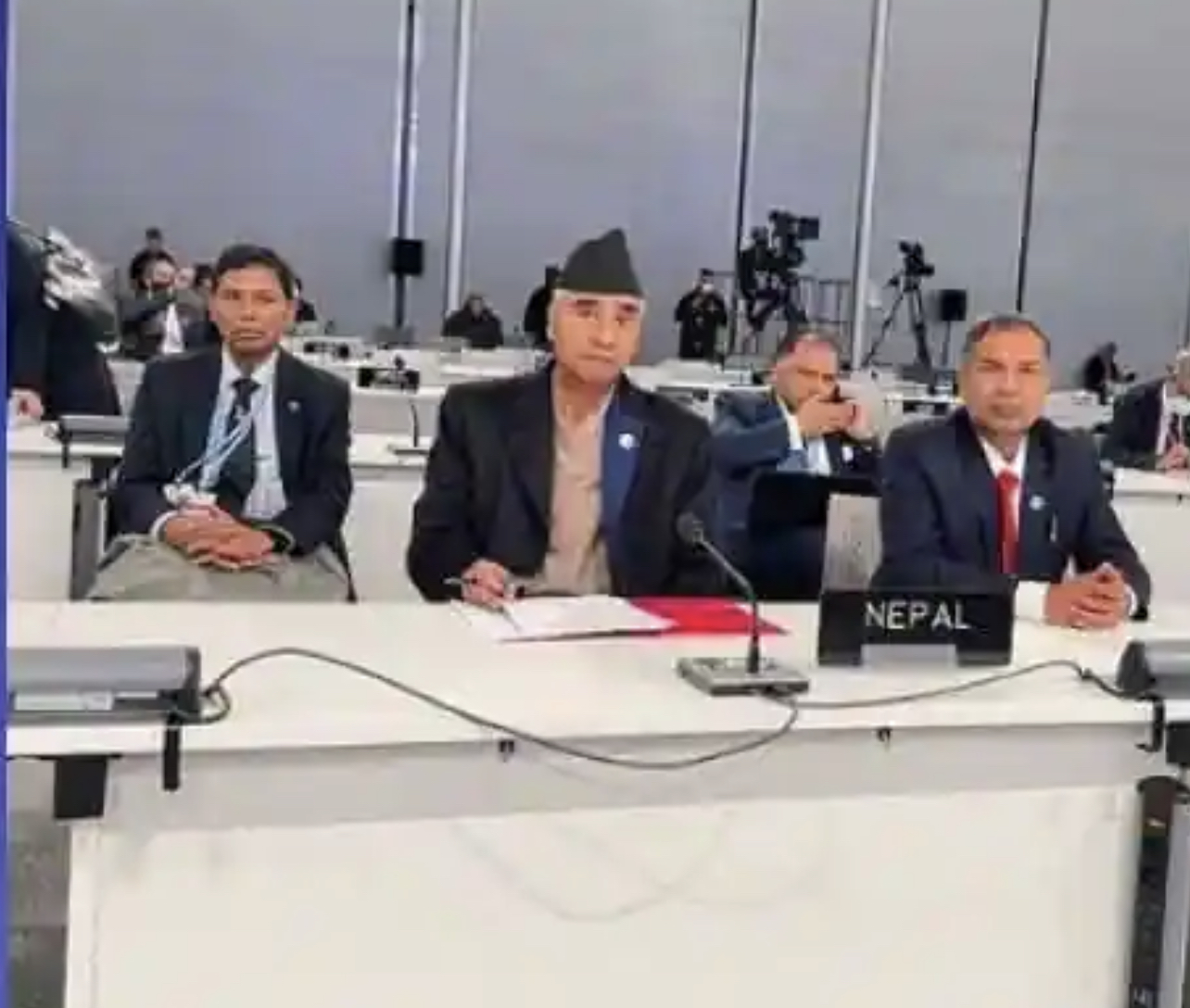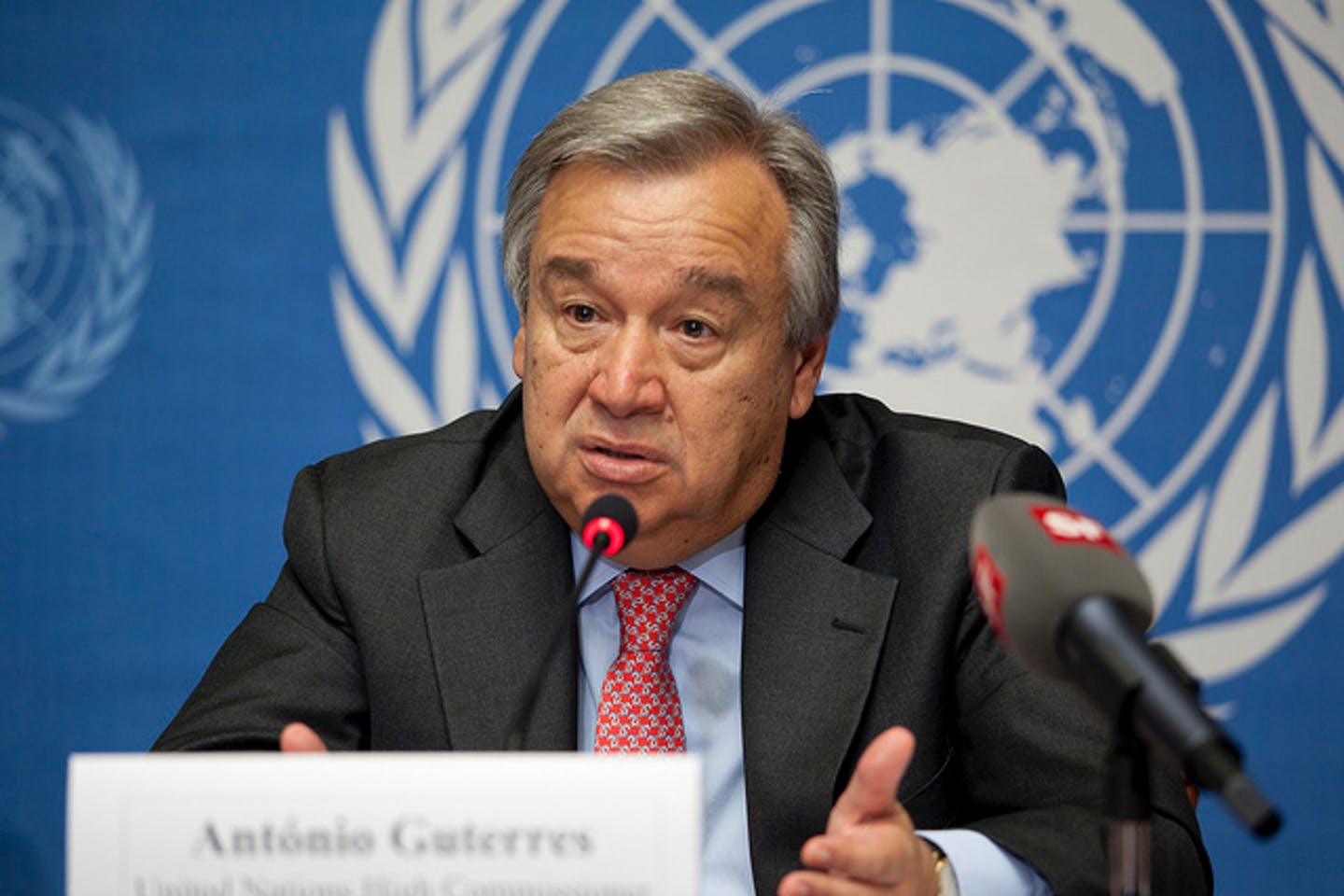Kathmandu — Nepal Army Chief General Prabhu Ram Sharma on Tuesday departed for New Delhi for a four-day visit to India on the official invitation of Indian Army Chief General Manoj Mukund Naravane.
“Nepal Army Chief General Prabhu Ram Sharmadeparts for New Delhi for a four-day visit to India on the official invitation of Indian Army Chief General Manoj Mukund Naravane,” said Nepal Army spokesperson.
In course of his India visit, Chief of Army Staff (CoAS) Sharma is scheduled to be honoured with the title of Honorary ‘General of Indian Army’ by the President of India, reported Khabarhub
“According to the NA Directorate of Public Relations, India‘s President Ram Nath Kovind will present him the title on November 10. The presentation of the title of Honorary General to the Army Chief of each country by Nepal and India remains as a unique military tradition,” the Khabarhub report said.
During the visit, Sharma is also scheduled to meet his Indian counterpart Naravane and other senior officials in the Indian Army.
In September, Nepal President Bidhya Devi Bhandari conferred the rank of General on Lieutenant General Prabhu Ram Sharma, the officiating Chief of the Army Staff.
An alumnus of National Defence College in India, Gen Sharma holds a Master’s Degree in History from the Tribhuban University, Nepal, and a Master of Philosophy in Defence and Strategic Study from the University of Madras.
Born on January 5, 1964, in Kathmandu, General Sharma is a graduate of Nepali Army Academy, who was commissioned into the Purano Gorakh Battalion, one of the oldest Infantry Battalions in the Nepali Army.
He was commissioned into the Nepali Army as a Second Lieutenant in 1984.
He completed his Company Command and Staff Course from the Nepali Army War College (1988-89) and Command and Staff Officers Course from Army Command and Staff College (1996-97) Nepal. In addition, he has completed the Technical Officer (TO) course from India. (ANI)
Home
Rescuers recover bodies of three French climbers lost in Nepal Himalayas
Kathmandu:
The bodies of three French climbers who disappeared in a remote corner of the Himalayas were recovered on Monday close to where they went missing last month, police in Nepal said.
The group were attempting to scale Mingbo Eiger, a 6,000-metre (19,700-feet) peak near Mount Everest, and were last heard from via satellite phone at their camp on October 26.
Bad weather hampered efforts to find the men and the rescue team said last week that they could have been buried under a depth of snow the size of a five-floor building.
Rishi Raj Dhakal, an inspector at the Solukhumbu district police office, told AFP the bodies were transported by helicopter to the small town of Lukla, which sits close to the route up to Everest.
“The bodies will now be sent to Kathmandu for post-mortem,” he added.
Ang Norbu Sherpa, a mountain guide who led the rescue efforts for the trio, said they had been found near the north face of Mingmo Eiger.
Sherpa was not able to provide separate confirmation that the bodies belonged to the missing climbers.
The three young mountaineers — Thomas Arfi, Louis Pachoud and Gabriel Miloche — were part of an eight-strong expedition. They had split into two groups to tackle different summits.
The men appeared to have abandoned their summit attempt and turned back when an avalanche hit.
Search operations were suspended last week, after the French Federation of Alpine and Mountain Clubs (FFCAM) conceded that the chances of finding the men were “practically zero”.
The FFCAM had also rejected claims in local media that the expedition did not have proper climbing permits.
Re-opened to tourists
Climbers have started returning to Nepal after the coronavirus pandemic forced a complete shutdown of its mountaineering industry last year and devastated the tourism-dependent economy.
The Himalayan nation of 30 million re-opened to tourists in September after scrapping quarantine requirements for vaccinated foreigners.
Everest and other Himalayan mountaintops usually attract climbers from all over the world each spring, when a window of good weather opens up between late April and the end of May.
The world’s highest peak saw a record mountaineering season the year before the pandemic began, with a record 885 people summiting Everest in the 2019 spring window.
But experts say the September-November season is more dangerous due to high winds and lower temperatures, and the world’s highest mountains see only a handful of people attempt to climb them at that time. (AFP)
‘There is a need to recognize the ACCA in every region and country of the world’- Krishna Prasad Dahal
The coronavirus (Covid-19) epidemic has hit the world’s economy hard. The UK, which has a strong economy, is also facing a major economic challenge at the moment. Along with Finance Minister Rishi Sunak, the local level (boroughs) are also announcing various programs to overcome this challenge. Will the relief packages being announced during this epidemic work? What is the status of digital startups in the UK after Corona? KRISHNA PRASAD DAHAL, FCCA, Managing Partner of Focus Somar Audit & Tax Accountants Ltd (www.focusandsomaraccountants.com), is also contesting for the post of Council Member of the ACCA- a representative body of professional accountants from around the world. He spoke to SOUTH ASIA TIME on related issues. Excerpts:
The second wave of coronavirus outbreaks has had a negative impact on the UK economy due to lockouts and stricter sanctions. How is the UK government prepared for this?
The epidemic has had a profound effect on people’s daily lives, work, businesses and public institutions. Measuring the UK government’s response and the financial and economic impact of the epidemic, it will have an impact on public spending and public service delivery for many years to come.
This means that the government has to borrow a large amount of money. In the first year of the epidemic, from April 2020 to 2021, 299 million was borrowed, the highest since 1946.
UK is currently working on a new plan for economic growth, job creation and the development of British industry. Some plans have been put forward to restore the economy. For example, tourism recovery plan, distribution of new rail passes, investment of one billion pounds for the network of electric vehicle charging hubs, and removal of carbon in transportation.
Similarly, councils have begun planning their local recoveries. Such schemes are believed to contribute to the development of the economy in the region. A long-term plan is being prepared to rebuild consumer confidence and enable retail, hospitality, cultural and tourism sectors to return to business.
What is the current state of the economy in all four countries of the United Kingdom- England, Wales, Scotland and Northern Ireland?
Prior to the Covid-19 epidemic, Scotland had a deficit of more than 7% of GDP. Similarly, the deficits in Wales and Northern Ireland were even higher 18 % and 19 %, respectively.
Scotland, Wales or Ireland can adopt their own policies to increase income and tax range for economic growth. However, this objective is difficult to achieve in the short term. Scotland’s GDP per capita and tax revenue is similar to Inland’s. It has spent more than £1,700 per person on public services.
Wales will face a different and bigger challenge. Wales has a lower per capita income than Scotland. For strengthening the economy of Wales, various measures will have to be taken by the government. It is seen that the tax range should be increased.
According to the IMF’s April 2021 projection, economic growth expected in 2021 (5.3%) and 2022 (5.1%). This is mainly due to the last minute trade agreement signed between the UK and the EU. Following Brexit, the EU-UK Trade and Cooperation Agreement was signed, defining new terms for future relations and cooperation between the UK and the rest of the EU. Government consumption is projected to make a positive contribution in the next two years. During an epidemic, there is uncertainty about development. According to the forecast of the EU Commission, by the end of 2022 UK’s GDP is projected to still be 5% below the level of the fourth quarter of 2019. One in four employees lost their jobs during the epidemic. Vehicles have declined by 6 percentage points. Real estate prices are rising in rural and coastal areas during the epidemic. Credit lending has risen for the second time since August 2020. Retail sales have been declining since the lockdown caused by Covid 19.
What kinds of businesses were hit hardest in the UK during the Corona epidemic? And what kind of businesses are benefiting now?
Coronavirus is the most difficult challenge for many businesses in the UK. Consumers had to be confined to their homes due to the lockdown caused by Corona. Shops, pubs, restaurants etc. are closed. This situation became unfavorable for many businesses.
The epidemic has particularly affected following industries:
– Transportation (airlines, cruise lines, travel agents), Hospitality area (restaurant, bar, hotel), Health and beauty (salon, parlor, gym, recreation center), Assembly manufacturing (automotive, meat packing etc.). For most businesses, the aftermath has been a frustrating one. However, for some companies, it has been beneficial. Different sectors and businesses have been successful despite unprecedented challenges such as Personal safety equipment, Food and beverage delivery, Means of home entertainment, Home and garden items and Health and fitness items.
The UK has been announcing various relief packages since March last year to boost the economy. Are those packages really effective?
The UK government has come up with a number of schemes to help the economy, business and workers in the aftermath of the Covid 19 epidemic.
Economic activity shrank as the British government announced measures to reduce/stop the spread of corona. The government is bringing various relief packages to keep the economic activity going. I have found these packages to be effective. Many have the impression that Finance Minister Rishi Sunak has been working very carefully and wisely on how to make the shrinking economy effective. For this, relief packages are being announced at different stages as per the need. The government has also come up with a scheme to provide 80 percent salary to those who have lost their jobs. Similarly, there are also plans for self-employment. The package has also been announced in a progressive way for those who have quit their jobs. A grant of £10,000 to £25,000 has been given for house rent and office expenses. The deadline for payment of value-added tax (VAT) and other taxes has been extended. The loan repayment period has been extended. Loan facility has been provided to the businessmen affected by coronavirus. Similarly, train and other public transport fares have also been reduced. In that sense, the package brought by the UK on this epidemic is really effective.
What has been the state of digital start-ups in the UK lately?
It is true that some tech enterprises are in good shape even during an epidemic. We know how social distance has been maintained during the epidemic, consumer behavior and working methods have changed. As a result, online businesses, video conferencing and e-commerce have grown. Technology is also being used in the education sector.
According to Tech Nation report 2021, UK tech pioneers are creating the future. They are developing groundbreaking technologies, creating new jobs, and supporting societies to thrive digital start-up in the UK that are mainly developing IT infrastructure, E-commerce, digitalization in all aspects of the data handling and processing, digital meetings, digital signature and documentation, digital record keeping and cyber security.
El Salvador, a Central American country, has introduced the cryptocurrency, Bitcoin, across the country including a rule to allow anyone to pay via Bitcoin without any refusal; it has been a subject of controversy as well. Does Bitcoin affect the country’s economy? What is the situation in the UK?
The financial regulator, the Financial Conduct Authority (FCA), has banned the sale and distribution of Bitcoin and other cryptocurrency derivatives to investors in the UK. This is another blow to the growing cryptocurrency market. In recent days, US authorities have accused Bitmax, a major crypto derivatives exchange, of failing to register in the United States and allegedly failing to comply with anti-money laundering laws.
According to a recent report published by the University of Cambridge, most of the firms involved in crypto investment are still operating without a license. And other operators too are potentially involved in such illegal activities. Bitcoin, designed to transform the existing financial system and eliminate financial intermediaries, has a strong potential to impact the global economy. In some ways, it is an alternative method to the global financial system. This type of cryptocurrency has established some degree of credibility in the market including banking sectors, investors, governments, and companies.
You have been providing professional services in the field of accounting and auditing in the UK for the past 15 years and are currently a candidate for a representative body of professional accountants from around the world. What are the reasons for running for ACCA Council Member and what are your agenda?
As a council member of a prestigious organization affiliated with Professional Chartered Certified Accountants from around the world, I would like to express my commitment to make the organization more effective, inclusive and globally recognized. I am very proud to be a member of this global organization with great potential for further development and expansion. I would like to call on all members of Professional Chartered Certified Accountants to give me the opportunity to contribute to the organization by electing me as a Council Member.
I would like to invest my experience and capabilities to spread the best business education around the world by refining the organization’s global identity, business value, recognition, global expertise, technical skills and charity spirit. Along with this, I have moved forward with the agenda of ‘recognizing’ ACCA in every region and country of the world, adjusting the fees for ACCA education and membership according to their place and economic capacity and providing necessary assistance from the organization to encourage talented students from developing countries.
South Korea to take Nepali workers from Nov last week
KATHMANDU: The Employment Permit System (EPS), which was closed for the last almost two years due to COVID-19, is resuming from the end of November.
South Korea, which stopped taking Nepali workers to prevent COVID-19 pandemic, is resuming the EPS process after two weeks.
According to the Ministry of Labor of South Korea, it will start taking workers under the EPS from 16 countries including Nepal from the last week of November, Khabarhub writes.
Over 50,000 migrant workers do go to South Korea under the EPS every year for work. However, this process stopped two years ago after the COVID-19 pandemic took a foothold across the across the world.
South Korea government has loosened a ban on the people’s movement including the international flights after 75.5 percent of the citizens took two doses of COVID-19 vaccines.
Nepali peacekeeper bags ‘United Nations Woman Police Officer of the Year’ Award
Kathmandu — Sangya Malla has been announced Woman Police Officer of the Year 2021 by the United Nations Department of Peace Operations.
Malla from Nepal who is currently serving in the UN Organisation Stabilisation Mission in the Democratic Republic of the Congo (MONUSCO).
Malla currently serves as the Chief of the MONUSCO Police Health and Environment Unit, which she helped establish in the country’s capital, Kinshasa.
The unit is responsible for implementing policies and procedures concerning the health and well-being of personnel as well as United Nations Police environmental initiatives.
Superintendent Sangya Malla with the UN mission in the country, MONUSCO, is Chief of its Police Health and Environment Unit, based in the capital, Kinshasa.
Safety during crises
Her contributions have been especially important during the ongoing COVID-19 pandemic, past Ebola outbreaks, and natural and humanitarian crises such as the volcanic eruption in the city of Goma last May. During that emergency, her unit alerted the local population and UN staff of precautionary measures.
“I am honored to receive this award, and I hope it will encourage more young women in my country and around the world to pursue careers in policing, which is still too often viewed as ‘man’s work’,” she said.
Ms. Malla will be presented with the award by UN Secretary-General António Guterres at a virtual ceremony on Tuesday.
Representing the best of the UN
The UN chief praised the “blue helmet” for her work in enhancing the safety and welfare of UN peacekeepers by mitigating their risks from COVID-19 and other threats.
“And she represents something far larger — the many contributions of women police officers in advancing peace and security around the world,” Mr. Guterres added. “Through her work, Superintendent Malla embodies the best of the United Nations.”
Ms. Malla helped develop guidance for preventing and mitigating the spread of COVID-19.
She has organized over 300 awareness sessions this year on coronavirus prevention as well as environmental protection for the local population, Congolese authorities and UN staff, UN news writes.
As the MONUSCO Police’s focal point on COVID-19, she has also been disseminating information about vaccines and promoting vaccination efforts.
Toxic liquor death toll rises to 24 in India’s Bihar
NEW DELHI — The death toll in the suspected toxic liquor consumption in the eastern Indian state of Bihar has risen to 24, officials said on Friday.
The deaths were reported in West Champaran and Gopalganj districts, north of Patna, the capital city of Bihar.
“In the past two days, the deaths due to consumption of toxic liquor have risen to 24,” a police official said. “West Champaran has recorded 13 deaths and Gopalganj 11 deaths.”
Local media reports put the death toll at around 33.
According to police, some two dozen people have been arrested in connection with the sale of spurious liquor in the two districts.
“A police official in charge of Nautan Police Station, and a village official have been placed under suspension for laxity of duty,” a police official said. “Even we are being told that one person who allegedly sold the liquor too has died after the consumption of liquor.”
Media reports said police conducted raids at various places and seized a large quantity of liquor.
Bihar is a dry state where there is a complete ban on the sale and consumption of alcohol.
Meanwhile, Bihar Chief Minister Nitish Kumar on Friday called for a fresh campaign to dissuade people from drinking alcohol in the state.
“I will conduct an in-depth review of the enforcement of prohibition in the state. But, it appears that we need another extensive campaign to spread awareness about the ill-effects of drinking,” he told reporters in Patna.
According to officials, the toxic liquor victims in Bihar bought the liquor from some vendors. Media reports said the people were rushed to hospitals after they complained of nausea, headache, vomiting and vision problems.
Deaths related to spurious alcohol are often reported in India, where people often drink cheap bootleg liquor.(Xinhua)
Gene common in south Asian people doubles risk of Covid death, study finds
By Smitha Mundasad, Nov. 5: University of Oxford scientists have uncovered a gene that doubles the risk of lung failure and death from Covid.
They say 60 per cent of people from South Asian backgrounds and 15 per cent of people of European ancestry carry the high-risk version of the gene.
Vaccines are key and help significantly reduce these risks, researchers say.
The Nature Genetics study sheds light on why some communities in the UK and South Asia are at higher risk from Covid – but does not fully explain it.
Building on previous genetic work, researchers used a combination of artificial intelligence and new molecular technology to pinpoint the exact gene – called LZTFL1 – responsible for the increased risks.
They estimate the risky version of the gene is present in about 2 per cent of people from African-Caribbean backgrounds and 1.8 per cent of people of East Asian decent.
Lead researcher Prof James Davies said the discovery that the risky gene does not affect all populations equally was very important. But he said a complex mix of factors – including age in particular – contributed to each person’s individual risk.
“Socio-economic factors were also likely to be important in explaining why some communities have been particularly badly affected by the pandemic.” He added “Although we cannot change our genetics, our results show that the people with the higher risk gene are likely to particularly benefit from vaccination.”
‘Derailing defences’
Researchers believe the risky version of the gene makes people’s lungs more susceptible to coronavirus.
They hypothesise that the high-risk gene derails a key protective mechanism that cells lining the lungs normally employ to defend themselves from Covid.
When cells lining the lung interact with coronavirus, one of their defence strategies is to turn into less specialised cells and become less welcoming to the virus.
This despecialisation process reduces the amount on the surface of cells of a key protein called ACE-2, which is key to coronavirus attaching itself to cells.
But for people with the risky version of the LZTFL1 gene this process does not work as well, and lung cells are left vulnerable to invasion of the virus.
Scientists say it is significant that the gene involved affects the lungs, but does not have an impact on the immune system.
This means people at high risk can still get immune protection from the vaccine, they say.
And scientists hope the discovery helps lead to new customised drugs that focus on the lungs – current ones focus mostly on the immune system.
(Inputs from BBC)
India records 12,265 new COVID-19 cases, 214 deaths
NEW DELHI: India’s COVID-19 cases have reached 34,332,407 with 12,265 new coronavirus cases in the last 24 hours.
Similarly, India recorded 214 deaths in the last 24 hours taking the death toll to 459,875, according to the latest figures collated by the Worldometers.
Currently, 156,810 people are undergoing treatment in various hospitals across the country while 33,715,722 have recovered from the pandemic.
Broken out in Wuhan City of China in December 2019, the coronavirus has killed 5,044,470 and infected 249,308,764 globally until the filing of this news.
The first pill designed to treat symptomatic Covid has been approved by the UK medicines regulator
London — The antiviral Lagevrio (molnupiravir) is safe and effective at reducing the risk of hospitalisation and death in people with mild to moderate COVID-19 who are at increased risk of developing severe disease, the Medicines and Healthcare products Regulatory Agency (MHRA) announced today.
This follows a rigorous review of its safety, quality and effectiveness by the UK regulator and the government’s independent expert scientific advisory body, the Commission on Human Medicines, making it the first oral antiviral for the treatment of COVID-19 to be approved.
Developed by Ridgeback Biotherapeutics and Merck Sharp & Dohme (MSD), Lagevrio works by interfering with the virus’ replication. This prevents it from multiplying, keeping virus levels low in the body and therefore reducing the severity of the disease.
Based on the clinical trial data, Lagevrio is most effective when taken during the early stages of infection and so the MHRA recommends its use as soon as possible following a positive COVID-19 test and within five days of symptoms onset
Molnupiravir has been authorised for use in people who have mild to moderate COVID-19 and at least one risk factor for developing severe illness. Such risk factors include obesity, older age (>60 years), diabetes mellitus, or heart disease.
“Today is a historic day for our country, as the UK is now the first country in the world to approve an antiviral that can be taken at home for COVID-19. This will be a gamechanger for the most vulnerable and the immunosuppressed, who will soon be able to receive the ground-breaking treatment.
“The UK is leading the way to research, develop and roll out the most exciting, cutting-edge treatments, and my thanks goes to the expert teams at the MHRA and MSD for this triumph, as well as the Antivirals Taskforce who have procured the treatment.
“We are working at pace across the government and with the NHS to set out plans to deploy molnupiravir to patients through a national study as soon as possible
“This antiviral will be an excellent addition to our armoury against COVID-19, and it remains vital everyone comes forward for their life-saving COVID-19 vaccine – particularly those eligible for a booster – to ensure as many people as possible are protected over the coming months.” Health and Social Care Secretary Sajid Javid said.
Dr June Raine, MHRA Chief Executive, said:
“Following a rigorous review of the data by our expert scientists and clinicians, we are satisfied that Lagevrio (molnupiravir) is safe and effective for those at risk of developing severe COVID-19 disease and have granted its approval.
“Lagevrio is another therapeutic to add to our armoury against COVID-19. It is also the world’s first approved antiviral for this disease that can be taken by mouth rather than administered intravenously. This is important, because it means it can be administered outside of a hospital setting, before COVID-19 has progressed to a severe stage.
“With no compromises on quality, safety and effectiveness, the public can trust that the MHRA has conducted a robust and thorough assessment of the data.”
Professor Sir Munir Pirmohamed, Chair of the Commission on Human Medicines, said:
“The Commission on Human Medicines and its COVID-19 Therapeutics Expert Working Group has independently reviewed the data and endorses the MHRA’s regulatory approval of Lagevrio.
“In clinical trials, Lagevrio was found to be effective in reducing the risk of hospitalisation or death for at-risk non-hospitalised adults with mild to moderate COVID-19 by 50%.
“Based on this and other data that has been carefully reviewed by the Commission and its expert group, it is clear Lagevrio is another safe and effective treatment to help us in our fight against COVID-19.”
Lagevrio is not intended to be used as a substitute for vaccination against COVID-19.
The government and the NHS will confirm how this COVID-19 treatment will be deployed to patients in due course.
‘The Himalayan Sunrise’ edited by Sangita Swechcha & Karen Van Drie launched in the UK
London – ‘The Himalayan Sunrise: Exploring Nepal’s Literary Horizon’, compiled and written by Sangita Swechcha and edited by Sangita Swechcha & Karen Van Drie, has been launched amid the ‘113th Laxmi Jayanti’ celebration event in London on 3 November. The online event was organised by Nepali Literature Development Council (NLDC) UK.
Chief Guest Dr Raghav Dhital OBE, while releasing the book, said: “The book is rich in its content. It is a compilation of interviews with prominent literary figures of Nepal as well as familiarising Nepal and Nepali culture through paintings, etc. apart from poetry, book reviews and featured books.”
“In fact, I feel that it’s been a long time that Nepalis living around the world were wishing to have one such publication. I believe the book will give an extra dimension to the Nepali literary world,” he added.
The book has been published by Book Hill International, a publication house based in England. Book Hill International is an affiliate of Book Hill Publication in Nepal.
Author Andree Roby said it is an enlightening publication which is a must read for someone wanting to know about Nepali literature.
“I am very excited to have this book published. The book is a unique collection of different genres of literature and I believe it will take you on a virtual trip to Nepal’s literary landscape in a typical Nepali flavour,” Sangita Swechcha said.
“The e-book and hardcover versions too are in the making and I am glad that the e-book will reach to Nepali readers soon through Book Hill International and Book Hill websites”, she added.
During the programme, poet and translator Hem Biswakarma, said: “This is the first time, probably, I came across with such a book which blends different genres in a single volume, showcasing the panorama of Nepali literature to the world forum.”
“As its name suggests, this is more than an endeavor to bring a rise Himalayan shine to the world’s literature horizon,” he added.
The book is available to buy from Amazon USA, Amazon UK, Amazon Italy, Amazon Australia,Amazon Canada, Amazon France, Amazon Spain, Amazon Netherlands.
It can be ordered in the UK from the following link. The price is set for £12.
Amazon UK: https://www.amazon.co.uk/Himalayan-Sunrise-Exploring-Literary-Horizon/dp/1915159008
In Nepal, dogs are gods for today: All you need to know about ‘Tihar’
London — The five-day Nepalese Hindu festival of Tihar started this week and the second day is known as Kukur Tihar or “day of the dogs”. Dogs are celebrated and blessed with a Tika – a red mark applied to their forehead. The animals are also given flowers garlands and offered food as part of the festival.
Hindus believe that dog is the messenger of Yamaraj – the God of death – and by keeping the dogs in good humour they will be able to appease Yamaraj himself.
It is not just beloved pets who are involved in the celebrations. Stray dogs are honoured on the day too.
Tihar is also called Deepavali or the festival of lights. Throughout this festival, people in Nepal clean their houses and courtyards; light up lamps and pray to Laxmi – the Goddess of Wealth – urging her to visit their houses and bless them.
The five-day festival that begins today, known as Tihar honors Yama, the God of Death, meanwhile the worship of Laxmi, the Goddess of Wealth dominates the festivities.
On the first day Kaag Tihar, is the day of the crow, the informant of Yama is worshipped. The second day Kukur Tihar is for worshipping the dogs as the agents of Yama. On the third day is Gai Tihar and Laxmi Puja. On this day cow is offered prayers and food in the morning, and Goddess Laxmi is offered elaborate prayers and puja in the evening.
The fourth day is for the draught animal, oxen,when members of the Newar community perform Mha Puja dedicated to oneself. The fifth day is Bhai Tika when sisters put tika on their brothers’ foreheads and give blessings. This festival is noted for lighting up homes with candles, oil-wick lamps and electric lights.
Houses all over the country are lit up with extra lights and decorated with garlands. A great view can be had of the brightly lit-up Kathmandu city from the Swoyambhunath Stupa. The celebrations begin with the adoration of crows and dogs. Dishes of rice, incense and light are set out for the dark messenger, while dogs are worshipped and offered goodies.
Pakistan reports ‘highest-ever’ October exports
ISLAMABAD, Xinhua — Pakistan’s exports increased by 25 percent during the first four months of the current fiscal year 2021-2022, compared with the same period of the last fiscal year, said a government official on Monday.
The country’s exports during July-October of 2021 were recorded at 9.468 billion U.S. dollars, slightly lower than the set target of 9.6 billion U.S. dollars, Abdul Razak Dawood, advisor to Pakistani prime minister for commerce and investment, said in a series of tweets.
The export figure in the same period of the last fiscal year was 7.576 billion U.S. dollars, according to Dawood.
Exports in October grew by 17.5 percent to 2.471 billion U.S. dollars, compared to 2.104 billion U.S. dollars in the same month of the last fiscal year, Dawood said.
Imports stood at 24.99 billion U.S. dollars in the first four months of the fiscal year compared to 15.19 billion U.S. dollars during the same period of the last fiscal year, the advisor said.
About 40 percent of the increase in imports was investment-driven which included capital goods, raw materials and other products, indicating expansion of industry and enhanced activity by industry, he said.
The remaining 60 percent was comprised of petroleum, coal and gas, vaccines, food, consumer goods and others, the official added.
‘We need bold and urgent climate actions and this is our last chance to save the planet and humanity’ – Dr Poshendra Satyal
DR POSHENDRA SATYAL worked as a research fellow at the Warwick University’s Department of Politics and International Studies (2018-2019) and Crichton Carbon Centre and ClimateXChange – Scotland’s Centre of Expertise on Climate Change (2012-2014). Poshendra has a Ph.D. in Environmental Policy from the Geography Department of The Open University, UK (2005-2009), MPhil in Environment and Development from the University of Cambridge, UK (2001-2002), BSc (Honours) in Agriculture from Haryana Agricultural University, India (1996-2000), and a BSc from Tribhuvan University, Nepal (1994-1996). He currently works with the Policy Team of BirdLife International’s Global Secretariat in Cambridge, UK. He is also an affiliate researcher at the Global Environmental Justice Research Group of the University of East Anglia, UK. He is also an Adjunct Professor at the Himalayan College of Agricultural Sciences and Technology (Nepal) and an Affiliate Research Fellow at the Southasia Institute of Advanced Studies (Nepal). Dr. Satyal spoke with BHAGIRATH YOGI and DR JAGAN KARKI on COP26 and related issues. Excerpts of the interview:
In your view, how did the opening session of the COP26 go?
In my view, the opening ceremony and Day One of the World Leaders’ Summit was a flurry of carefully crafted speeches and announcements by world leaders and other delegates. We heard from a mix of nations: rich countries such as the UK (the host), Italy, USA, Canada, and Australia to emerging power such as India to island nations such as Barbados. There were also powerful words and warning from various high-level delegates and representatives: Prince Charles, Sir David Attenborough, UN Secretary General, youth representatives, climate activists, and indigenous peoples. It was interesting to hear a variety of views and perspectives from these delegates, representatives as well as plans and announcements of world leaders. Besides the high-level main summit, there have also been a series of interesting side events. Among others, the late-night news that world leaders have agreed to end and reverse deforestation by 2030 and the pledge of 19.2 billion dollars of public and private funds for the purpose comes as an important first major deal at COP26.
So, what are the main agenda for discussions on the table?
While COP21 in 2015 that delivered the Paris Agreement was all about promises, COP26 in Glasgow has been touted as an event for delivery of bold and urgent climate action. The concern and agenda in COP26 are thus focused on accelerating climate action to meet the scale and urgency of the challenge i.e. cutting emissions deeper and faster, adapting to climate impacts, and scaling up finance for developing nations. Looking at the event schedule, the next two weeks are packed with a range of agendas. The event kicked off with a two-day World Leaders’ Summit on Monday in which country leaders and representatives are outlining their climate ambitions on how to secure global net zero by mid-century and keep 1.5°C alive. This will be followed with dedicated events on specific themes: financing (scaling up of both public and private finance on climate action); energy (accelerating phasing out of coals and fossil fuels and switching to renewables); meaningful participation of women, youth and public empowerment; importance of nature and sustainable land use (including combating deforestation) for climate action; issues of adaptation, loss and damage (including actions to support vulnerable nations, communities and habitats); role of science and technology for climate solutions; actions towards zero-emission transport; and linking communities, cities and regions on climate action. In the words of the UK Prime Minister Boris Johnson, the host nation’s agenda for COP26 can be summarised as “coal, cash, cars and trees” i.e. phasing out of coal; collective finance for carbon finance; switching to electric vehicles; and addressing deforestation and advancing forest restoration.
COP26 also has a central theme on collaboration (between governments, businesses, and civil society of different kinds – including Indigenous Peoples and local communities, youth, women). However, as we have seen in the past COP meetings, different parties and actors take different positions and perspectives on various aspects of climate policies. Thus, there is going to be a lot of heated debates and deliberations in the negotiations. We can only wait and see how negotiations and outcomes in the next two weeks unfold in terms of whether, to what extent, and how COP26 will set a decisive pathway for achieving net zero and whether we are ready to take forward coordinated climate action for decades to come.
Least Developed Countries (LDCs) have been on the receiving end of the climate impact though they pollute far less than the richer countries. Is ‘Loss and Damage’ going to be a major agenda during the summit?
Climate change impacts are inequitably distributed as the people who contributed least to the problem are the ones to suffer the most. For example, while Nepal’s contribution to global carbon emissions is only about 0.02 percent, the country is already experiencing climate change impacts (in the form of unpredictable and erratic rainfalls, increased cases of landslides, flooding, and glacier melting). It is mostly the LDCs like Nepal, vulnerable nations, particularly the small island nations which will suffer more from climate change impacts in the future. In fact, as the recently launched World Meteorological Organisation’s report highlighted, it is already happening: extreme weather and climate change impacts killed thousands of people, displaced millions, and cost hundreds of billions of dollars in Asia in 2020, while also having a heavy toll on infrastructures and ecosystems.
For LDCs and vulnerable countries, ‘loss and damage’ is a key agenda item and there is a dedicated event at COP26 on 8th November (Monday) on the theme of ‘delivering practical solutions needed to adapt to climate impact and address loss and damage’. LDCs have for years accused the richest nations, which were the first to start polluting the atmosphere, of failing to take a fair share of the burden. In fact, there are several ethical and justice issues associated with mitigating and adapting to climate change. The richest countries such as from G7 and G20 groups have a moral responsibility to help the poorest and vulnerable nations and people. Yet, there is often a tendency from the developed countries to tone down the language of ‘loss and damage’ by couching it under ‘adaptation’. LDCs have been calling for a balanced redistribution of finance (50/50) between mitigation and adaptation (of the pledged annual fund of 100 billion dollars a year, which remains unfulfilled so far!) and with dedicated extra finance for loss and damage. The practical support on loss and damage has been very slow. It remains to be seen whether and how COP26 will be able to make a progress and ensure that there is fair share of loss and damage finance (not merely adaptation) that goes to the most vulnerable countries and communities already facing extreme impacts.
In the aftermath of the Paris Agreement, how likely is it that countries will be willing to lower the target of CO2 emissions to keep the 1.5-degree Celsisus limit of global temperature rise?
The Paris Agreement was aimed at limiting global warming to less than 2 degrees Celsius by this century, compared to temperature before the industrial revolution, with a more ambitious goal of staying below 1.5 degrees Celsius. However, various reports that have come out in the run-up to the Glasgow COP26 have suggested that we have not been able to meet the expectations and targets of the Paris Agreement. For example, the recent Emissions Gaps report by UNEP has shown the world is on course to warm around 2.7degree Celsius with huge disruptive impacts. Based on the periodic Nationally Determined Contributions (NDCs) submitted by the countries, as this report has highlighted, we are only 7.5% off predicted 2030 emissions compared to previous commitments. The IPCC Physical Science basis report 2021 has also warned that we have missed the target and are already hitting the limit. Key messages from these reports are very clear: we need bold and urgent climate actions with deep and fast curbing of emissions, and this is our last chance to save the planet and humanity!
How do you see the issue of nature, climate, and people being presented in COP26?
Besides climate targets, we also have global efforts and initiatives on nature and people such as meeting the Sustainable Development Goals (by 2030), the Global Biodiversity Framework (currently under negotiation and to be finalised for implementation during the COP15 in Kunming, China), and the UN Decade on Ecosystem Restoration (2021-2030). Because of the interrelated issues of climate, nature and people, various organisations like BirdLife have been advocating that net zero and the carbon-neutral target is not enough, we also need to build an equitable and nature-positive future. This has been acknowledged by the formal COP26 programme which has a Nature Day event on 6th November (Saturday).
The joint IPBES and IPCC report earlier has also highlighted that we urgently need demonstrable solutions which tackle the climate crisis, biodiversity loss, and societal challenges together. Investing in nature also has a range of local and global benefits because ecosystems such as forests, wetlands, peatlands, grasslands together provide nature-based solutions to climate mitigation (absorbing one-third of carbon dioxide from the atmosphere), support livelihoods, maintain biodiversity and help towards adaptation to climate change. Hence we need integrated agendas to address the interrelated crises of economic and political stability, climate, and nature, aligning with achieving the climate targets of the Paris Agreement, the Sustainable Development Goals, and targets of the Global Biodiversity Framework.
From adaptation and compensation, climate negotiations are complex in their nature. How can civil society from the Global South make their voices heard?
Global policy processes like the COP26 are indeed complex as there is a lot of politics and diversity of positions from a range of actors. In order to consolidate positions and have a collective voice, governments and civil society from the Global South have been already holding a number of preparatory meetings prior to COP26 – such as between the LDCs, African Group of Negotiators and Small Island Developing States as well as between different civil society groups – environmental I/NGOs, Indigenous Peoples and local communities, women, youth, minority groups and so on. The civil society from the Global South should network and make strategic alliances with both like-minded organisations and governments (e.g. from LDCs and G77) on specific issues to amplify their voices, positions and priorities. For example, Indigenous peoples and local communities from the Global South have been advocating for their recognition and rights as leaders of biodiversity and climate actions and demanding their full and effective participation in all levels of decision-making processes and many civil society organisations have been supporting their advocacy.
For a country like Nepal that is sandwiched between two Asian giants, China and India, that together emit 35 percent of the CO2 emissions in the world, how important are COP26 negotiations?
For climate vulnerable countries like Nepal COP26 negotiations and outcomes matter a lot – particularly in terms of climate finance, technology transfer, and capacity strengthening. China and India are global players and are also important from climate mitigation aspects. The positions they take on certain issues such as phasing out of coals and agreeing to the timelines for rapid reduction of emissions will also have impacts on global and regional cooperation for climate action. Besides China is hosting the COP15 on biodiversity and its leadership and position on biodiversity and climate is important in terms of developing the next course of action. Nepal should take up its country-specific priorities as well as regional issues such as the Himalayas and the Hindu Kush region with India and China as Nepal and Himalayas are one of the most vulnerable to the impacts of climate change. Nepal should also play a strategic role as an intermediary to facilitate climate and biodiversity discussions between these countries and others, not only for its own advantage but also for wider benefits regionally and globally.
For millions of people in poor countries, Covid 19 has added new challenges in their livelihoods. What do you think needs to be done to deal with climate change in the so-called post Covid world?
The current, devastating pandemic has clearly brought into sharp focus how our mismanagement of nature is not only causing ecological breakdown and exacerbating climate change, but also driving the emergence of zoonotic diseases. With the new challenges, it is again the poorest in the Global South who have been affected the most. In fact, in our recent research in Nepal, we found that COVID19 has negatively impacted the achievement of most Sustainable Development Goals in the short- to medium-term but it may also open up a narrow window for sustainable transformation.
In the post-COVID context, pandemic recovery plans must include steps to tackle climate change, biodiversity loss, and social inequality. It is not just about economic recovery and building back better, we need to focus on a green and just recovery towards achieving an equitable, climate-neutral, and nature-positive future. The developed world had pledged 100 billion dollars per year for climate finance in 2009, which is now postponed to 2023. Integrated investment and blended finance, both from the public and private sectors will be crucial for mobilising sustainable funding to civil society and governments in the Global South.
Nepal PM Deuba urges world leaders to give priority to mountain agenda at COP27
London —Nepal Prime Minister Sher Bahadur Deuba has urged world leaders to recognize the specific climate vulnerability of the high Mountains and accord high priority to the mountain agenda in all climate-related negotiations.
With temperature rising above global average, Deuba on Monday urged the world leaders to recognise the specific climate vulnerability in the mountains and accord high priority to the mountain agenda in all climate-related negotiations.
The prime minister said due to the rising temperature, glaciers are melting, snowfall is decreasing and permafrost is melting in the Himalayan region.
Extreme climate events are increasing, leading to losses in terms of financial, ecological and human. Due to this, 80 per cent of the country’s population is at risk from natural and climate induced hazards.
“During the last 40 years, natural disasters have caused close to US$ 60 billion physical and economic damage in my country alone,” PM Deuba said in his address.
Nepal is also committed to the implementation of Paris Agreement and the country has sent an ambitious NDC plan to decarbonise the country’s economy in all sectors.
He also announced that Nepal will soon host Sagarmatha Sambad, a dialogue named after Mt Everest, to raise awareness on the climate crisis in the Himalayas. “Keeping the global temperature below 1.5° Celsius is vital for mountain people. It is an issue of our survival,” said Deuba.
Speaking about Nepal’s efforts to balance development and climate, the prime minister said, “We have mechanisms to ensure that international climate finance is channelled to support transformational approaches in implementing adaptation, mitigation and disaster management actions together.”
“We are engaging with all stakeholders including private sector, indigenous people, disadvantaged communities, women and youth in all our climate actions. Recognising the value of nature to both adapt and mitigate climate change, we have decided to create a dedicated institution for working on nature conservation and climate change together,” he stated.
Full video :
UN chief calls for vaccine equity as global COVID-19 deaths exceed 5 million
New York — UN Secretary-General Antonio Guterres on Monday called for vaccine equity and continued vigilance against the coronavirus as global COVID-19 deaths exceeded 5 million.
“Today, the human family crosses a painful new threshold: 5 million lives lost to COVID-19,” he said in a statement. “This devastating milestone reminds us that we are failing much of the world.”
While wealthy countries are rolling out third doses of the COVID-19 vaccine, only about 5 percent of people in Africa are fully vaccinated. This is a global shame, he said.
The five-million threshold should also stand as a clear warning: guard against the virus cannot be lowered, he said. There are still more deaths, overcrowded hospitals and exhausted health workers, and the risk of new variants spreading and claiming more lives.
At the same time, other dangerous threats continue to allow COVID-19 to thrive — misinformation, vaccine hoarding and vaccine nationalism, and lack of global solidarity, he said. “I urge world leaders to fully support the global vaccination strategy I launched with the World Health Organization last month. We need to get vaccines into the arms of 40 percent of people in all countries by the end of this year — and 70 percent by mid-2022. I call on them to deliver with urgency and scale, address funding gaps and coordinate their actions for success,” Guterres said.
It would be a mistake to think that the pandemic is over. As restrictions ease in many places, there is a need to match vaccines with vigilance, including through smart and proven public health measures like masking and social distancing, he said. “The best way to honor those 5 million people lost, and support health workers fighting this virus every day, is to make vaccine equity a reality by accelerating our efforts and ensuring maximum vigilance to defeat this virus,” said Guterres. (ANI/Xinhua)
Lithuania Opens Visa Application Centre in Nepal
Kathmandu — Citizens of Nepal can now apply for a Lithuanian visa as the latter has opened a visa application centre in the country.
The inauguration of the centre was done by the Ambassador of Lithuania to India, Julius Pranevičius, in the company of VFS Global representatives, SchengenVisaInfo.com reports.
Through an official statement made by VFS Global, it has been revealed that citizens of Nepal who wish to apply for a Lithuanian visa can do so starting from next Monday, November 8. They will be able to submit their application for both long short-term visas.
“Travellers from Nepal to Lithuania can submit their short & long-term visas applications at our Lithuania Visa Application Centre in Kathmandu from November 8 2021. The centre was inaugurated by H.E. Mr. Julius Pranevičius, Ambassador of Lithuania to India, on November 1 2021,” VFS Global wrote on its official Twitter account.
Speaking at the opening of the centre, Pranevicius said that the newly opened visa application centre will help to strengthen the relationship between the two countries, since the centre will not only facilitate the application process but will also help to develop the cooperation in the field of trade, academia, and tourism, among others.
“Friendly and productive meeting with KUnepal, many potential fields for cooperation with #Lithuanian universities! Thank you, KUnepal & Vice-Chancellor Prof. Dr Bhola Thapa, for warm hospitality,” a Twitter post by the Embassy of Lithuania to India reads.
Soon after the inauguration, VFS Global also came with an official statement. They said that everyone who will submit their application through VFS Global would enjoy access to other services, including assistance with filling the application form. In addition, the same stated that applicants would also get assistance in relation to the document checks, updates, and several other services.
Currently, Nepal is part of Lithuania’s red list. This means that all those who have not been vaccinated or recovered from the COVID-19 disease must follow self-isolation rules upon their arrival.
“Unvaccinated and non-sick individuals arriving from the red zone remain subject to mandatory pre-trip testing and ten days of isolation upon arrival,” the Lithuanian Ministry of Health explained.
In addition, the authorities have emphasised that everyone is required to present an NVSC profile of a Passenger Locator Form, which needs to be completed within 48 hours before entering the country.
Except for these two requirements, travellers from Nepal are also required to present a PCR test taken 72 hours before reaching Lithuania or an antigen test taken within 48 hours before arrival.
On the other hand, fully vaccinated travellers and those previously infected with COVID-19 are exempted from entry restrictions. ( From : Schengenvisainfo )




